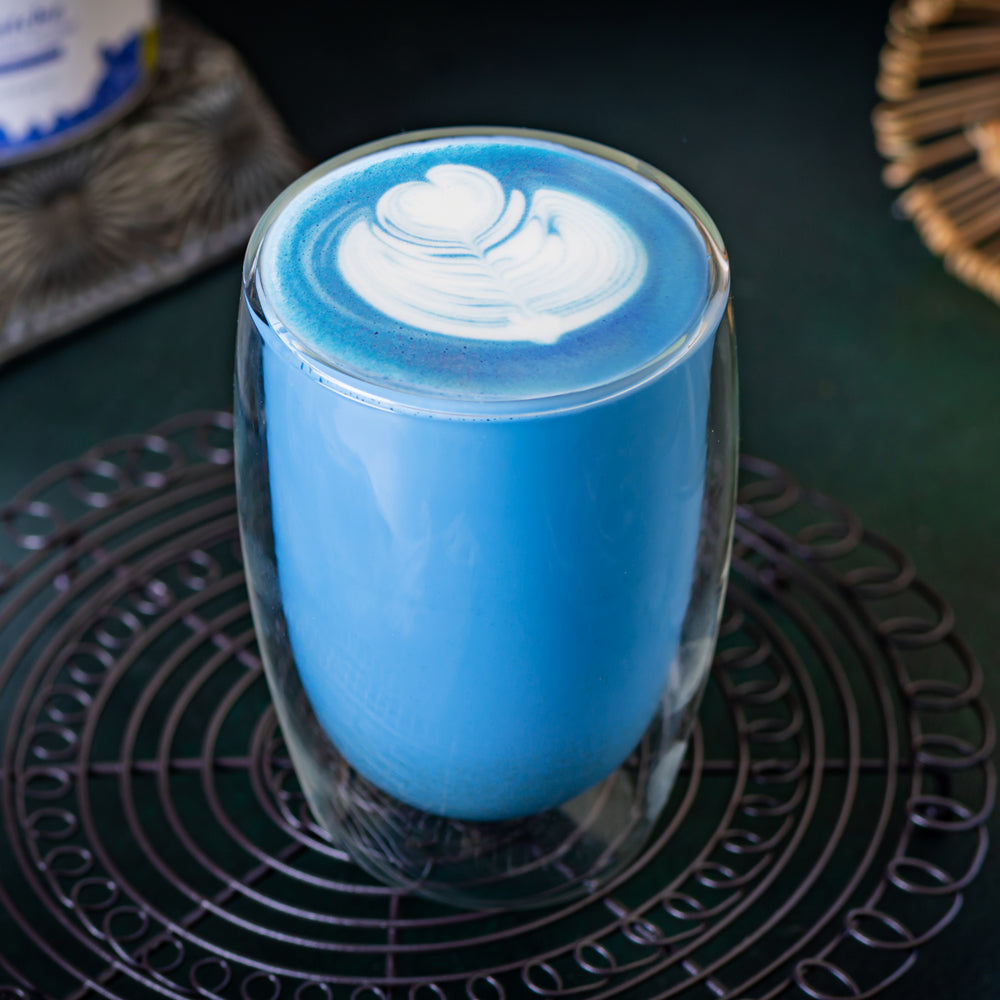
Introduction
If it’s not fresh, most fruit on the shelf has lost something—nutrients, color, flavor—and this is the tradeoff behind shelf-stable.
But did you know there’s actually a way to preserve fruit for decades while keeping its nutritional profile and that fresh, sweet flavor?
This is possible thanks to the freeze-drying process, a food preservation method like traditional sun-drying, which makes long-term storage possible without the need for refrigeration.
Today, we’re going to discuss how freeze-dried fruits retain 97% of their original nutrients, are shelf-stable, and can be used in almost any dish.
Additionally, at the end of the article, we’ll show you how to incorporate them into your routine with some easy and delicious recipes. Now, let’s begin!
Table of content
How Freeze-Dried Fruits Keep Freshness for Longer

Freeze-dried fruits are fruits that have gone through a process called freeze-drying, which removes their water content while keeping the nutrients, flavor, and structure intact.
Freeze drying, also known as lyophilization, is a method used to preserve perishable materials. This process involves 3 steps that eliminate moisture, the main factor behind spoilage.
As a result, we get a shelf-stable product that can be stored at room temperature for longer periods—sometimes decades—while preserving its original qualities.
Fruits are harvested at their peak ripeness for this process before they have a chance to degrade. Since freeze-drying avoids the damage caused by heating, it preserves the perfect balance of sweetness and nutrients found in fresh fruit, while allowing it to last for years on the shelf.
Now let’s take a look into the process.
Freeze-Drying Process

-
Step 1: Freezing
The process starts by freezing the fruits at very low temperatures, around -50°F.
The exact time depends on the size of the fruit—after all, you wouldn’t expect an apple to be ready as quickly as a tiny blueberry.
This freezing step is essential for preserving the fruit’s qualities, as it stops any biochemical reactions that might cause the fruit to deteriorate.
Once the fruit is completely frozen, we can move to the primary drying phase.
-
Step 2: Sublimation
In this phase, the frozen fruit is placed in a vacuum chamber where the pressure is reduced to about 0.1% of atmospheric pressure, and at the same time, the temperature in the chamber is slowly increased between -10°F and 0°F.
This allows the ice to sublimate, meaning it goes directly from a solid state (ice) to a gaseous state (water vapor) without turning into liquid.
During sublimation, more than 95% of the moisture is removed without damaging the fruit’s structure, nutrients, or flavor.
Once the moisture has been removed, we can move on to the next phase.
-
Step 3: Desorption
The fruit is then exposed to slightly higher temperatures to remove any remaining water that didn’t sublimate.
The temperature is gradually increased, and it typically ranges from 120°F to 160°F, depending on the type of fruit.
By the end, the fruit is completely dehydrated, with a moisture level below 5%. This low moisture is what makes freeze-dried fruits shelf-stable.
Without moisture, there’s less opportunity for microorganisms to grow, which significantly extends the product’s shelf life.
Benefits of Freeze-Dried Fruits

Nutritional Retention
One of the biggest benefits of freeze-dried fruits is that they retain virtually all of the nutrients found in fresh fruits.
Since the process applies very little heat, it minimizes the disintegration of heat-sensitive compounds like vitamin C, anthocyanins , and other antioxidants.
Unlike other drying methods that use higher temperatures for longer periods, freeze-drying helps avoid the breakdown of bioactive compounds into less beneficial forms, preserving their antioxidant activity and nutrient density.
Freeze-dried fruits retain their full health benefits, providing nearly the same nutrient content as fresh fruits.
Here’s a list of the most commonly used fruits in the freeze-drying process. They’ve become popular choices due to their great nutritional value.
-
Strawberries: One of the most valuable antioxidants in strawberries is vitamin C, which helps to strengthen the immune system.
This component is very sensitive to heat and oxygen. Since the freeze-drying process doesn’t use excessively high temperatures, the component remains stable throughout the process, keeping it intact within freeze-dried strawberries.
-
Blueberries: These fruits are a great source of anthocyanins that fight free radicals and protect the body from oxidative stress.
The low-temperature process helps maintain their chemical structure and antioxidant properties. The minimal exposure to oxygen prevents degradation.
-
Apples: A great source of fiber, which supports healthy digestion and regulates blood sugar levels.
Fiber stays intact during the freeze-drying process, since it doesn’t rely on heat or moisture to stay stable.
-
Mangoes: Rich in vitamin A, also known as beta-carotene. This vitamin is essential for maintaining a healthy vision.
Just like the vitamin C in strawberries, this antioxidant is preserved during the freeze-drying process because heat is applied gradually.
Color Retention
The color in fruit comes from phytochemicals like anthocyanins, carotenoids, and flavonoids, which are powerful antioxidants. All of these compounds are heat-sensitive.
Sudden, high heat exposure degrades the chemical structure of fruits, leading to color fading. Heat also speeds up oxidation, another factor that affects color molecules.
Even though some heat is used during the desorption step, it is applied gradually and in a controlled way.
This careful and slow increase in temperature makes sure that heat-sensitive compounds aren't exposed to intense heat for too long, preventing the breakdown.
As a result, freeze-dried fruits retain their intense and natural color, which is why products like freeze-dried fruit powders are such great options for coloring food naturally.
Check out this Homemade Dragon Fruit Bounty Bars recipe, where just 2 tbsp of freeze-dried dragon fruit powder are used to achieve a vibrant, intense pink color, and you can add more or less until you reach your desired shade.
Thanks to the color retention, freeze-dried fruit powders are a great option for creating eye-catching recipes.
Flavor Retention
The flavor of fruits is provided by their natural sugars, acids, and a combination of other components—like aromatics and esters—that are sensitive to excessive heat, and they are preserved during the freeze-drying process.
Freezing the fruit locks in its original taste, and when the water is removed during sublimation, the flavor becomes more concentrated.
By the end of the process, freeze-dried fruits have a rich taste without the need for artificial flavors, added sugars, or preservatives.
The lack of artificial ingredients enhances the fresh and natural taste of the fruit, making it a healthier option for your diet.
Convenient and Versatile
Freeze-dried fruits are a useful alternative for busy lifestyles.
During the drying process, moisture is removed preventing bacteria or microorganisms from growing.
This means freeze-dried fruits don’t require refrigeration and can be stored at room temperature for long periods without losing their freshness. Since they are harvested at peak ripeness and don’t degrade while on the shelf, these fruits are in season all year round.
There’s a wide variety of freeze-dried fruits available on the market, including organic, non-GMO, and gluten-free options, making them suitable for various dietary needs.
You can also find freeze-dried fruit powders, like organic freeze-dried wild blueberry powder, which make things even easier. Just add a spoonful or two to smoothies, baked goods, desserts, or any creative recipe you can think of.
With freeze-dried fruits, you get natural, rich flavor, nutrients, and vibrant colors—all in one place.
Fresh Fruit vs. Freeze-Dried Fruit

Fruits are a key element in most people’s diets, and the way they’re presented—whether fresh or freeze-dried—comes with its own set of advantages and disadvantages. Let’s break down the key differences between them.
Fresh Fruit
Pros
Only fresh fruits offer dynamic nutrition—a combination of active enzymes and living cells in their most bioavailable form.
Fresh fruits are in their most natural state, without any processing, making them a great option for clean eating.
They naturally contain high water content (up to 90%), helping your body stay hydrated.
Cons
- Fresh fruit is often picked prior to ripeness so that it can be transported to the market, resulting in inferior flavor and nutrition.
- Some fruits are only available during specific seasons, limiting your options throughout the year.
These fruits spoil quickly. Their bioactive components degrade over time, requiring proper storage and timely consumption.
Freeze-Dried Fruit
Pros
Similar to frozen fruits, the fruit can be selected at peak ripeness since it is quickly preserved, retaining the full flavor and nutrient profile.
Freeze-dried fruits last significantly longer than fresh fruits—often decades—without the need for preservatives or refrigeration.
They’re convenient and easy to use—no peeling, washing, or cutting required.
Cons
Since freeze-drying removes water, freeze-dried fruits don’t provide hydration.
The freeze-drying process can make these fruits pricier than fresh options.
How to Incorporate Freeze-Dried Fruits
If you want to incorporate freeze-dried fruit into your routine, one of the most versatile options are the powdered varieties, which you can add to almost anything.
To help you get started, here are some ideas that you can try out.
Strawberry Powder Ice Cream Recipe

Strawberry ice cream is a classic favorite, and by using freeze-dried organic strawberry powder, you can make this treat healthier and full of flavor. Freeze-dried ingredients are perfect for making ice cream because they’re completely water-free, which prevents the formation of ice crystals and keeps the mixture smooth and creamy.
Mini Dragon Fruit Powder Cheesecakes Recipe

These Mini Dragon Fruit Cheesecakes are a fun bite-sized treat, with a vibrant color thanks to freeze-dried dragon fruit powder. Packed with antioxidants, they’re a delicious and wholesome dessert choice. Simple to make and perfect for sharing, these cheesecakes are sure to be a hit with friends and family!






